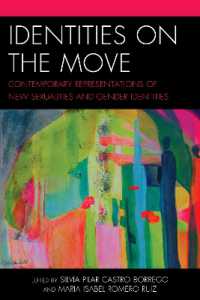Full Description
During the nineteenth century sport underwent a revolution which was heavily influenced by the social and economic changes brought about by the Industrial Revolution in England. How this sporting 'revolution' affected the development of sport at a micro-level, in a peripheral Irish setting, has received only limited attention. Donegal, a rather isolated county lying in the north-west of Ireland, but at the time part of the United Kingdom and the British Empire, has thus far received little analysis. The development of Gaelic and association football will be given particular emphasis but cricket, hockey and rugby will also be explored in detail. This book is the first comprehensive study of sport in Donegal throughout the period from 1880 until 1935. In assessing developments at a local and national level, it examines how structures for competitions and teams underwent a significant change within the county and throughout Ireland from the late Victorian period until the early years of the Irish Free State.Conor Curran illustrates the incompleteness of the Irish sporting 'revolution' and how the growth of sport in Donegal relied mainly on local individuals' enthusiasm rather than on any national, or even provincial, administrative agencies.
Of particular importance in the decision to undertake an examination of sport there is the diversity of the county, socially, culturally and physically, which means that it differed from a number of other Irish counties and many of its clubs lacked a particular unity for the administration of sport to work effectively throughout its area. How the growth of sport in Donegal contrasted with wider developments will be examined in this book, as, despite these failures, by the end of 1934 there were at least sixty-seven Gaelic football teams in operation and at least 103 soccer teams.







